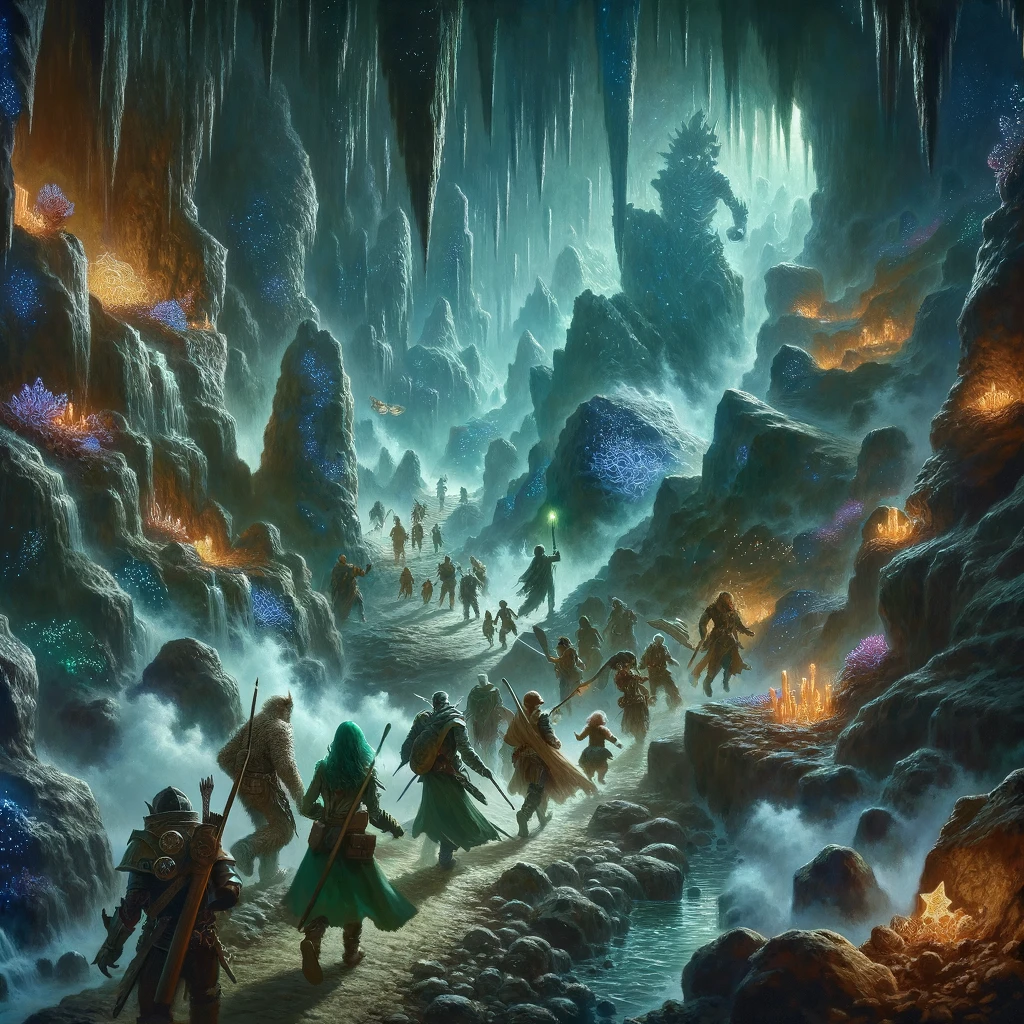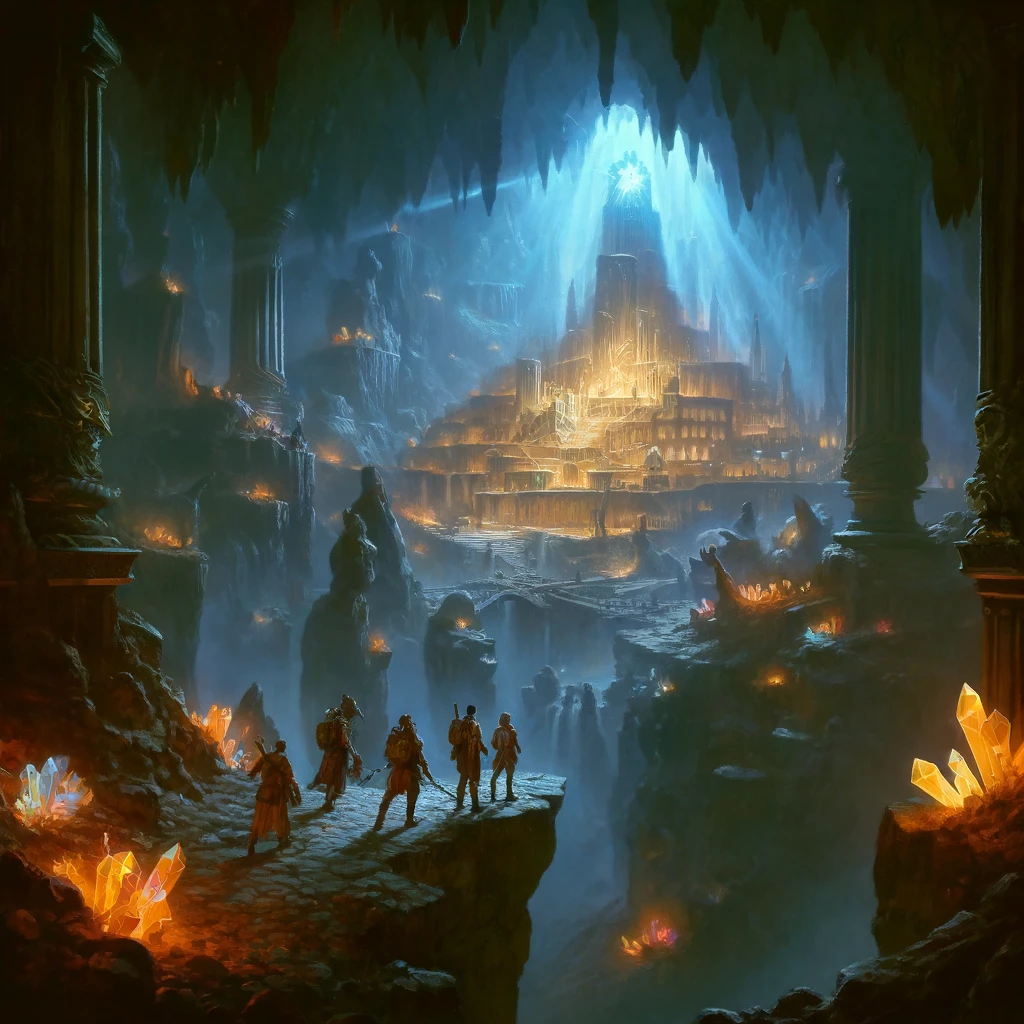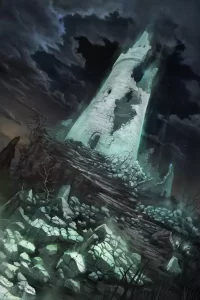
Out of the Abyss
"Out of the Abyss" is a Dungeons & Dragons adventure that plunges players into the depths of the Underdark, a subterranean world of danger and intrigue. Managing travel in this setting is crucial for the atmosphere and pacing of the campaign. The Underdark is not just another wilderness; it's a labyrinthine domain of twisted caverns, colossal fungi, and ancient ruins, all lurking with malevolent creatures and constant threats. Here we investigate key strategies and tips for Dungeon Masters (DMs) to effectively manage travel in the Underdark during an "Out of the Abyss" campaign.
In "Out of the Abyss," the psychological impact of the Underdark's oppressive environment can also play a significant role in the journey. The darkness is not merely physical but also mental, weighing down on adventurers with the sense of being watched, the claustrophobia of narrow passages, and the paranoia induced by the constant threat of danger. Dungeon Masters should leverage this aspect to deepen the immersive experience, using mood-setting descriptions and challenges that test not only the characters' physical capabilities but their mental resilience as well. For instance, integrating mechanics for stress or sanity checks can enhance the realism of coping with the Underdark's harsh conditions, adding a layer of complexity to the navigation and survival aspects of the adventure.
1. Emphasize the Environment
The Underdark is a character in its own right. Its oppressive, claustrophobic environment can have psychological effects on characters, influencing their decisions and interactions. Utilize descriptions that highlight the alien and often terrifying aspects of the environment:
- Bioluminescence: Describe how the only light often comes from glowing fungi, phosphorescent minerals, or the eerie glow of some predatory eyes.
- Massive Scale: Convey the sheer size of some of the caverns, which can contain entire ecosystems or cities within them.
- Strange Echoes: Use auditory descriptions to enhance the sense of mystery and danger, where every sound could be a potential threat.
2. Navigation Challenges
Navigation in the Underdark should be challenging and require more than just a map. Paths change, landmarks are rare, and traditional compasses are useless due to the magnetic anomalies of the deep earth:
- Skill Checks: Regularly require players to make Wisdom (Survival) checks to navigate successfully. The difficulty of these checks can vary based on their familiarity with the region or the guidance they have.
- Guides: Characters may need to rely on NPC guides who can betray them or demand high prices for their services.
- Magical Assistance: Spells like find the path or magical items that aid in navigation can become valuable resources, but also targets for theft or bargaining.
3. Resource Management
Traveling in the Underdark is taxing on resources. Food and water are scarce, and the environment is unforgiving:
- Foraging: Characters might need to rely on foraging for food, such as hunting subterranean creatures or gathering fungi and lichens.
- Carrying Capacity: Be mindful of what players can realistically carry in terms of supplies, as overloading can lead to slowed progress or increased risk.
- Environmental Hazards: Introduce environmental challenges that can deplete resources, such as toxic spores, corrosive gases, or areas of intense heat or cold.
4. Encounters
Encounters in the Underdark should be varied and reflect the complexity of the ecosystem:
- Hostile Natives: Not all encounters are with monsters. Drow patrols, duergar traders, or territorial kuo-toa can provide social interactions, trade opportunities, or combat.
- Fauna and Flora: The Underdark is home to unique creatures and plants, some of which can be dangerous, while others might be beneficial.
- Random Encounters: Use random encounters to keep the journey unpredictable and tense. However, balance this with the pacing of your story to avoid overwhelming the party.

5. Pacing the Journey
Managing the pace of travel is critical to keeping the campaign engaging:
- Travel Time: Be clear about how long it takes to travel between locations. This helps set the stakes and manage the urgency of the campaign's objectives.
- Narrative Shortcuts: When appropriate, skip over less interesting travel segments to keep the story moving. Use montages or summaries to cover long periods of travel without important events.
6. Psychological Impact
The oppressive nature of the Underdark can wear down characters' resolve:
- Morale Checks: Consider incorporating morale checks to see how the journey affects the characters' spirits.
- Sanity and Fear: Use mechanics for fear, madness, or sanity where appropriate, especially when characters encounter the more alien and terrifying aspects of the Underdark.
"Out of the Abyss" offers a rich setting that is as much about the journey as it is about the destination. By effectively managing travel within the Underdark, DMs can create a memorable and immersive experience that emphasizes survival, exploration, and the constant lurking dangers of a world beneath the world. This approach not only enriches the campaign but also deepens player engagement through a profound sense of accomplishment and survival against all odds.






